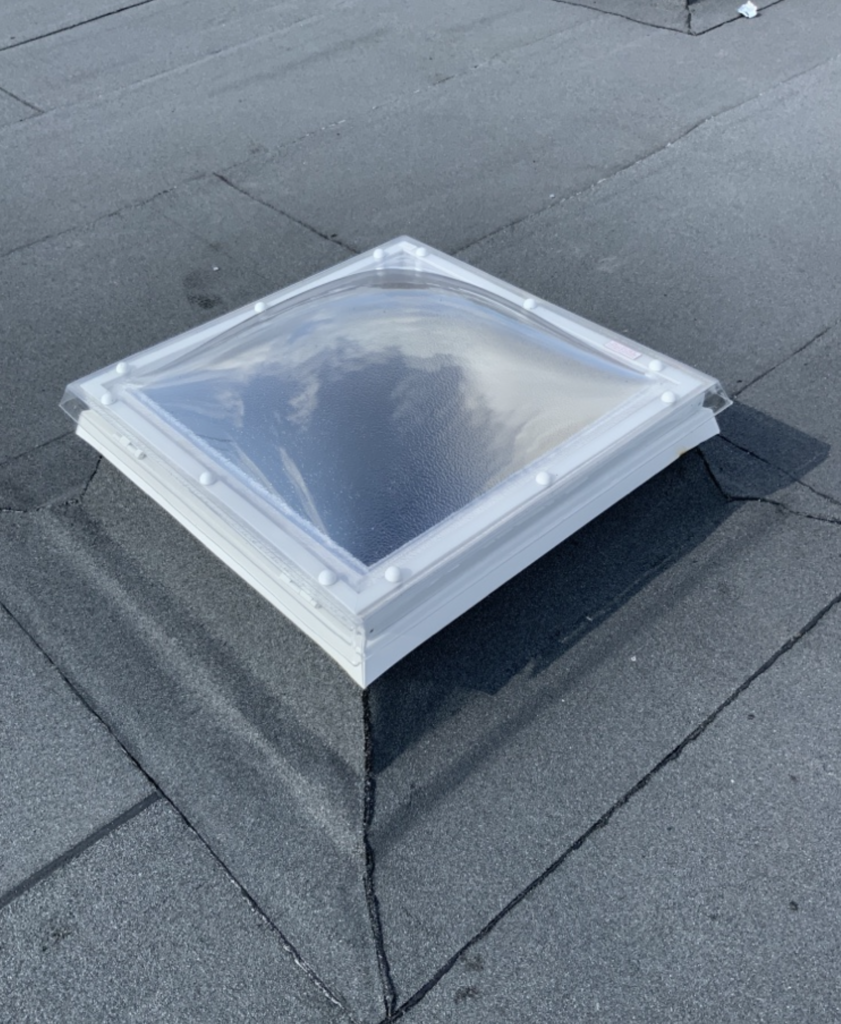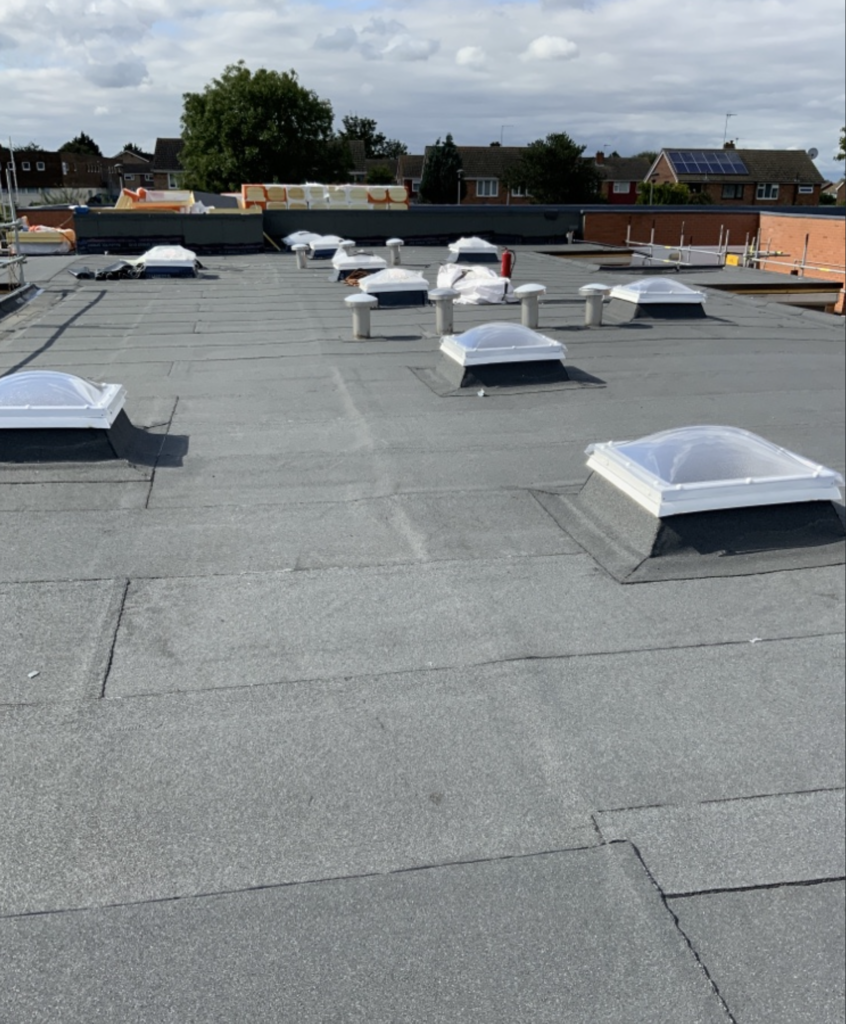As an experienced project manager, I’ve overseen numerous projects involving the renewal of felt flat roofs. This essential task not only extends the life of the roof but also improves the overall efficiency and safety of the building. Here, I’ll delve into the benefits of renewing a felt flat roof, the importance of adding insulation, and the nuances of handling skylight replacements, all while addressing the critical issue of asbestos management, particularly in CLASP-style school buildings and similar structures in the UK.
Benefits of Renewing a Felt Flat Roof
Felt flat roofs are renowned for their durability and cost-effectiveness. However, like any roofing material, they require periodic renewal to maintain their integrity and performance. The benefits of renewing a felt flat roof include:
- Extended Lifespan: Renewing the roof adds several years to its life, ensuring that the building remains protected from the elements.
- Enhanced Weatherproofing: A fresh layer of felt improves the roof’s ability to resist water penetration, preventing leaks and water damage.
- Improved Energy Efficiency: Incorporating modern materials and insulation can significantly enhance the building’s energy efficiency, reducing heating and cooling costs.
- Increased Property Value: A well-maintained roof contributes to the overall value of the property, making it more attractive to potential buyers or tenants.
The Importance of Adding Insulation
Adding insulation during the renewal process is crucial for several reasons:
- Thermal Efficiency: Proper insulation reduces heat loss in the winter and heat gain in the summer, resulting in a more comfortable indoor environment and lower energy bills.
- Improved Drainage: Insulation can be used to create a slight slope, facilitating better water runoff and reducing the risk of ponding water, which can lead to leaks and structural damage.
- Regulatory Compliance: In many jurisdictions, including the UK, building regulations require certain insulation standards to be met during renovation projects. Ensuring compliance avoids potential legal and financial penalties.
Skylight Replacements with Minimal Disturbance
Skylights are a popular feature in many buildings, providing natural light and ventilation. However, replacing them can be challenging, especially in older buildings where the original frames may contain asbestos. The use of inserts for skylight replacements offers several advantages:
- Preservation of Existing Frames: By using inserts, the existing skylight frame can be retained, avoiding the need to disturb potentially asbestos-containing materials.
- Reduced Risk: Minimizing disturbance to the old frame significantly reduces the risk of asbestos exposure, protecting workers and occupants from the harmful effects of asbestos fibers.
- Cost Efficiency: This method is often more cost-effective, as it eliminates the need for extensive asbestos abatement procedures and reduces labor costs.
Asbestos and Flat Roofing in CLASP-Style School Buildings
CLASP (Consortium of Local Authorities Special Programme) buildings, prevalent in the UK from the 1950s to the 1980s, often contain asbestos materials. This presents specific challenges during roof renewal projects:
- Asbestos Identification: Before any work begins, it is crucial to conduct a thorough survey to identify asbestos-containing materials. This ensures that proper precautions are taken to manage and mitigate the risk.
- Health Risks: Asbestos fibers, when disturbed, can cause serious health issues, including lung cancer, mesothelioma, and asbestosis. Ensuring safe handling and disposal is paramount.
- Regulatory Compliance: The UK has strict regulations regarding asbestos management. Compliance with the Control of Asbestos Regulations 2012 is mandatory to protect workers and occupants and to avoid substantial fines and legal repercussions.
- Specialized Contractors: Engaging contractors with specific expertise in asbestos management is essential. These professionals are trained to handle asbestos safely and efficiently, minimizing the risk of exposure.
Conclusion
Renewing a felt flat roof is a multifaceted project that offers numerous benefits, from enhanced durability and weatherproofing to improved energy efficiency and property value. Adding insulation and using inserts for skylight replacements further optimize the process, ensuring better performance and safety. However, the presence of asbestos in older buildings, particularly CLASP-style school buildings in the UK, necessitates meticulous planning and execution to mitigate health risks and ensure regulatory compliance. By approaching these projects with careful consideration and expertise, we can achieve a successful and safe roof renewal, safeguarding the building and its occupants for years to come.



